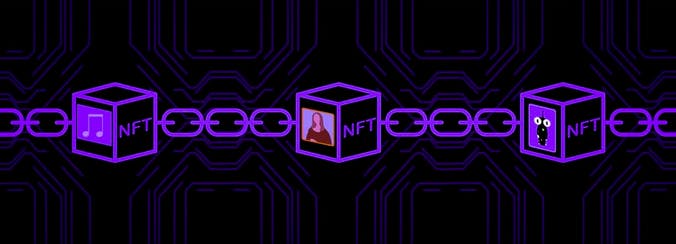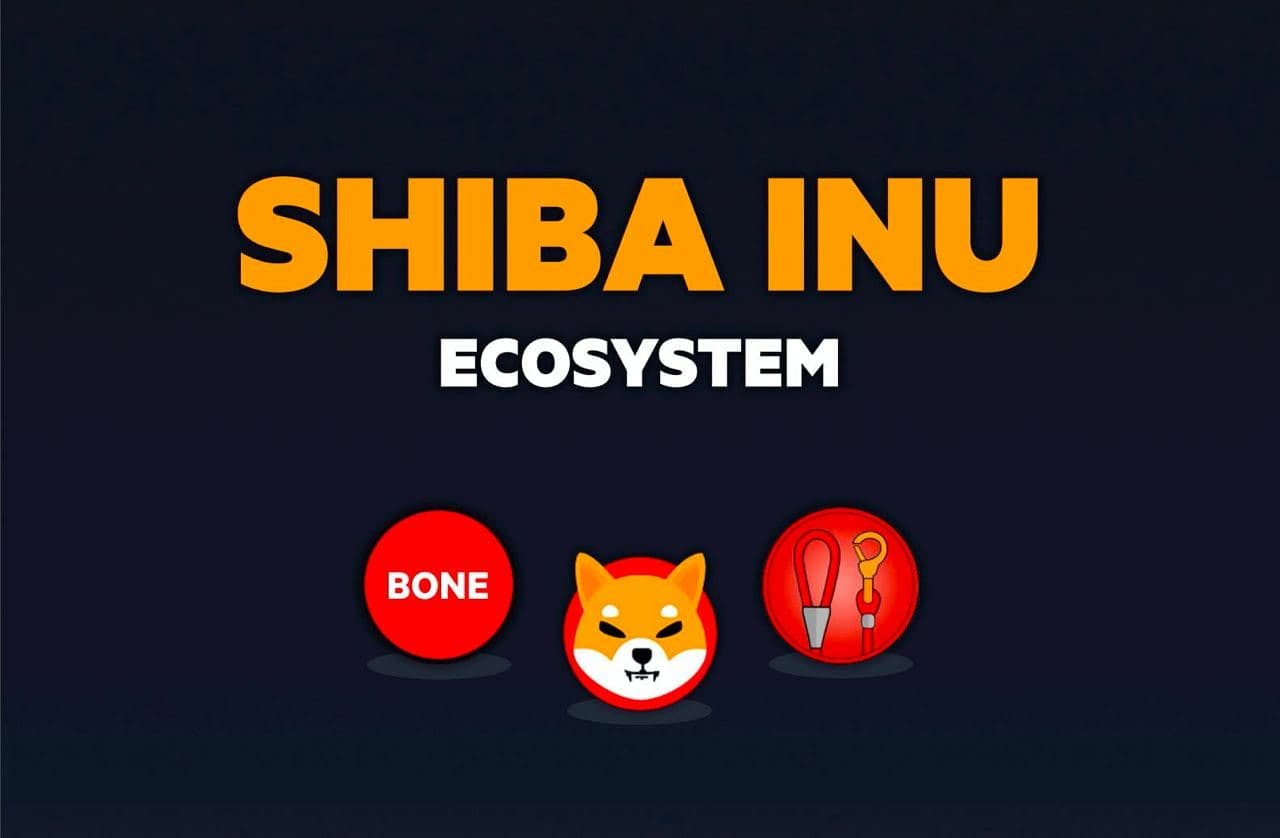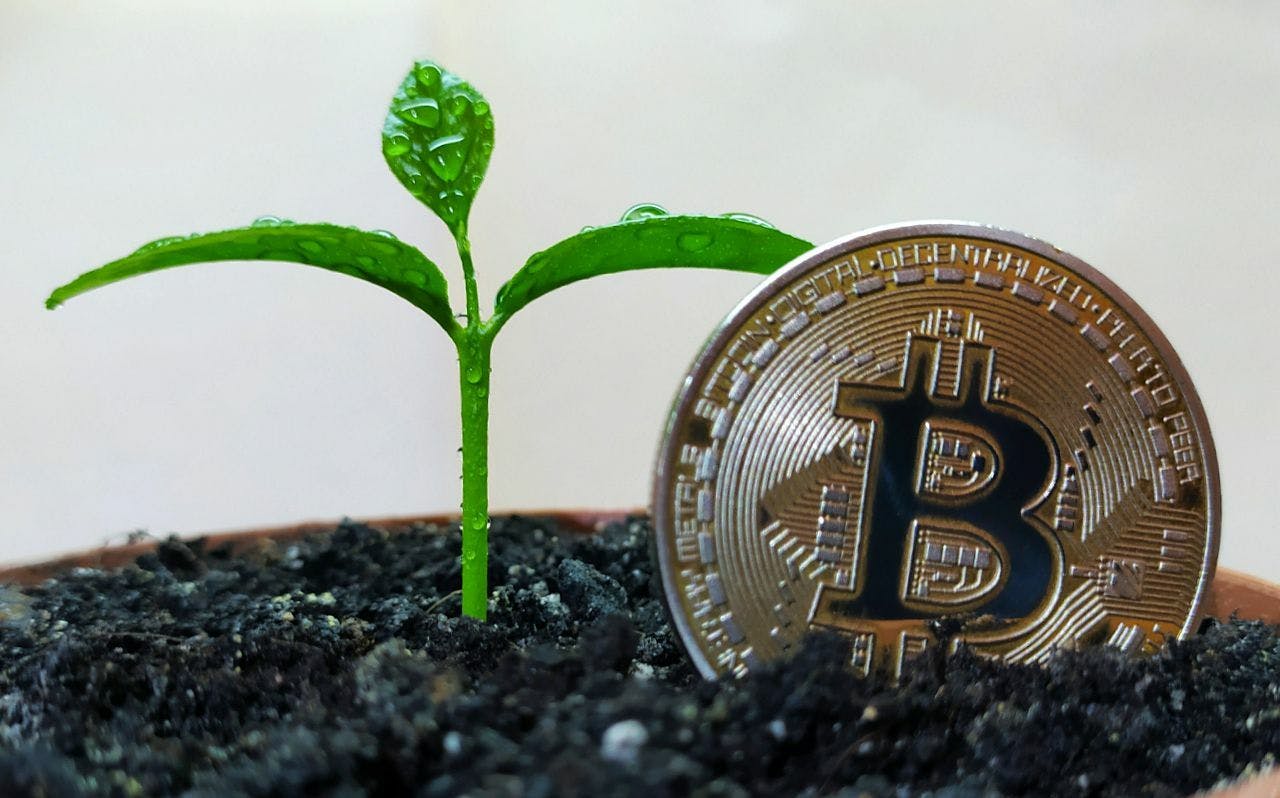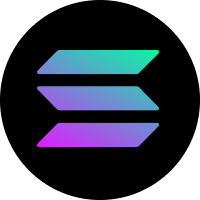
- All
- Tools
- Analytics
- Technical Analysis
- Trading
- Blockchain
- DeFi
- Guides
- Company News
- Educational
- Opinion
- Price Predictions
- Market News
- News
- Trading cases
- Practical guides
- Exchanges
- Trading signals
- Cryptocurrency
- Crypto bots
- Other
Become a crypto master
Learn everything about crypto,
trading and bots

The rapid rise of NFTs
Start Trading on 3Commas Today
Get full access to all 3Commas trading tools with free trial period

There is no denying it: non-fungible tokens (NFTs) are on the rise. In 2020, the number of transactions involving NFTs had tripled to reach more than $250 million. While a study by the Nonfungible analytics company suggests that the trading volume for the first quarter of 2021 has risen 131-times year-over-year. And while the concept for NFTs has been around since 2017, it was the recent bitcoin rally and DeFi boom that has made them flourish.
The NFT market is vigorously discussed in the cryptocurrency space and beyond, and the debate over the use of these tokens and whether their large valuations are justified is still ongoing. In today’s article, we will discuss non-fungible tokens, their potential, and projects that can find their place within the market to bring added value to their users.
What are NFTs?
NFTs (Non-Fungible Tokens) are unique digital assets that can be stored on blockchains, easily exchanged for other assets, and act as collectibles. They are unique because they cannot be replaced with each other (non-fungible). This is unlike more traditional cryptocurrencies like bitcoin which are fungible, meaning, they can be replaced by an identical item (i.e. 1 bitcoin = 1 bitcoin).
An NFT contains a record of ownership of a digital asset. A user can assign rights to any digital object, be it a file, an image, or a video. This means, an NFT captures and confirms the ownership of the original digital asset.
The first projects experimenting with NFTs were created back in 2014 on the bitcoin blockchain; these included CounterParty and MasterCoin (known today as OmniLayer). NFTs began to appear on the ethereum network in 2017-2018 and a prime example of their popularity at the time was the blockchain-based game CryptoKitties. Valuations for individual CryptoKitties grew exponentially, with the most expensive at the time being the “Dragon,” selling for 600 ETH, or $170,000 at the time of sale.
Today, NFT-related projects are mostly launched on the ethereum network, but other blockchains accommodate such assets as well. There are also numerous standards for NFT tokens which relate to their functionality. The most popular is the ERC-721 standard used to issue NFTs for gaming assets or digital collectibles. An extended version of ERC-721 is the ERC-1155 standard, which provides more advanced functionality and allows for the creation of semi-replaceable assets in which the identifier is linked to an entire asset class instead of a single asset. Others include ERC-998 which allows merging NFTs, and ERC-875 which lets users transfer several NFTs in a single transaction.
Opportunities
The popularity of NFTs reached unprecedented levels in late 2020, and the development of new standards allowed them to be used in different markets. This began to provide opportunities for the further development of digital commodities trading. While NFTs has created a new industry for digital art and content, NFT technology also makes it possible to digitize and translate the value of real-world assets to the virtual world. This empowers content creators from all areas, including art, collectables, gaming, music, film, and more.
A prime example of the use of non-fungible tokens in digital art is the $69 million sale of Beeple’s artwork called “Everyday: the FIRST 5,000 DAYS” in the form of a NFT. Many other artists have also begun to use this technology to digitize their creations as well.
Immense potential for the use of NFTs lies in the gaming industry, where they are actively used for internal purchases and proof-of-ownership for virtual objects. Tokenization of such items allows users to transfer them between accounts or even trade them to other users.
Other, more widespread use cases for unique tokens include tokenization of luxury items, subscriptions, virtual real estate, collectible cards, identity verification, collateral for loans and derivatives, and much more.
However, many projects dipping their toes into NFT technology do not really benefit from using it. This has created an overhyped industry with high valuations and a bubble-like environment. As soon as the general euphoria subsides, many projects in the space will cease to exist as they are not providing any value or solving real problems within the industry. Only truly useful platforms and tools will thrive and remain standing within the NFT space.
NFT projects and platforms
Today the number of platforms related to the creation, trading, or exchange of NFTs is mindblowing. Here are a few of the most popular and exciting NFT technologies out there today.
Marketplaces
One of the most popular marketplaces for creating and trading NFTs is OpenSea, where ERC-721 and ERC-1155 tokens are available. The marketplace offers its users game collectibles, digital assets, tokenized music, domain names, and more.
Another major platform for trading unique tokens is Rarible, which is focused on the creators of digital and game items. The peculiarity of the platform is the RARI token, which is utilized to empower users and interact with the protocol.
Collectible tokens
NBATopShot is an NFT marketplace licensed by the National Basketball Association (NBA) and created by Dapper Labs, the company that developed the Flow blockchain and the aforementioned NFT-hit CryptoKitties. NFTs are available in the form of digital basketball cards with short video highlights. Cards are limited, and their price depends on the edition and the serial number of the card.
The CryptoPunks is a collection of 10,000 unique pixel characters, each having unique accessories and status indicating to whom the character belongs. The CryptoPunks collection is the second most capitalized of all NFT collections as of the time of publishing, with the most expensive character selling for $7.6 million.
Domain Names
The ERC-721 NFT standard for blockchain domains provides its proprietors with permanent ownership of the domain name. The buyer of such a token acquires proof of ownership of that domain and as the owner can sell it at any time. Unlike traditional domain names, NFT-domains do not require renewal, as the tokens paid for the lease are blocked for the period of ownership of the domain name.
Ethereum Name Service allows users to create websites with the “.eth” domain name. Any user who buys this name acquires the NFT, which is proof of its ownership. Other services like Unstoppable Domains or NFT Kred work in a similar way.
Gaming Assets
The gaming industry seems to be one of the most obvious use cases of non-fungible tokens. Any unique item that can be claimed by players becomes more valuable when tokenized, thereby giving it the ability to be traded and/or sold. Additionally, NFT game items cannot be blocked or taken away from the player, and the risks of losing the item due to fraud or censorship are reduced.
The use of unique tokens in video games will allow developers to create a more sustainable in-game economy, thus opening users to a wider range of possibilities and interactions. For example, the blockchain game Sorare allows its users to create soccer teams, run tournaments, exchange, and trade players in the form of NFTs. Sorare is the first digital collection platform that is being developed in partnership with soccer clubs, allowing them to increase brand awareness and attract more fans.
Conclusion
The emergence of NFT technology and its popularization is driven by the digitization of many areas of our lives. Although the size of the market for NFTs is much less significant when compared to DeFi, the properties that this technology offers are already significant in their own right. Content creators, artists, and musicians can monetize their content and protect it from illegal use. And while the technology is still used heavily for speculation, the underlying principles of NFTs display a marked improvement for users across many industries, and therefore will likely be around for decades to come.

A proven leader, successful at establishing operational excellence and building high-performance teams with a sharp focus on value creation and customer success.






